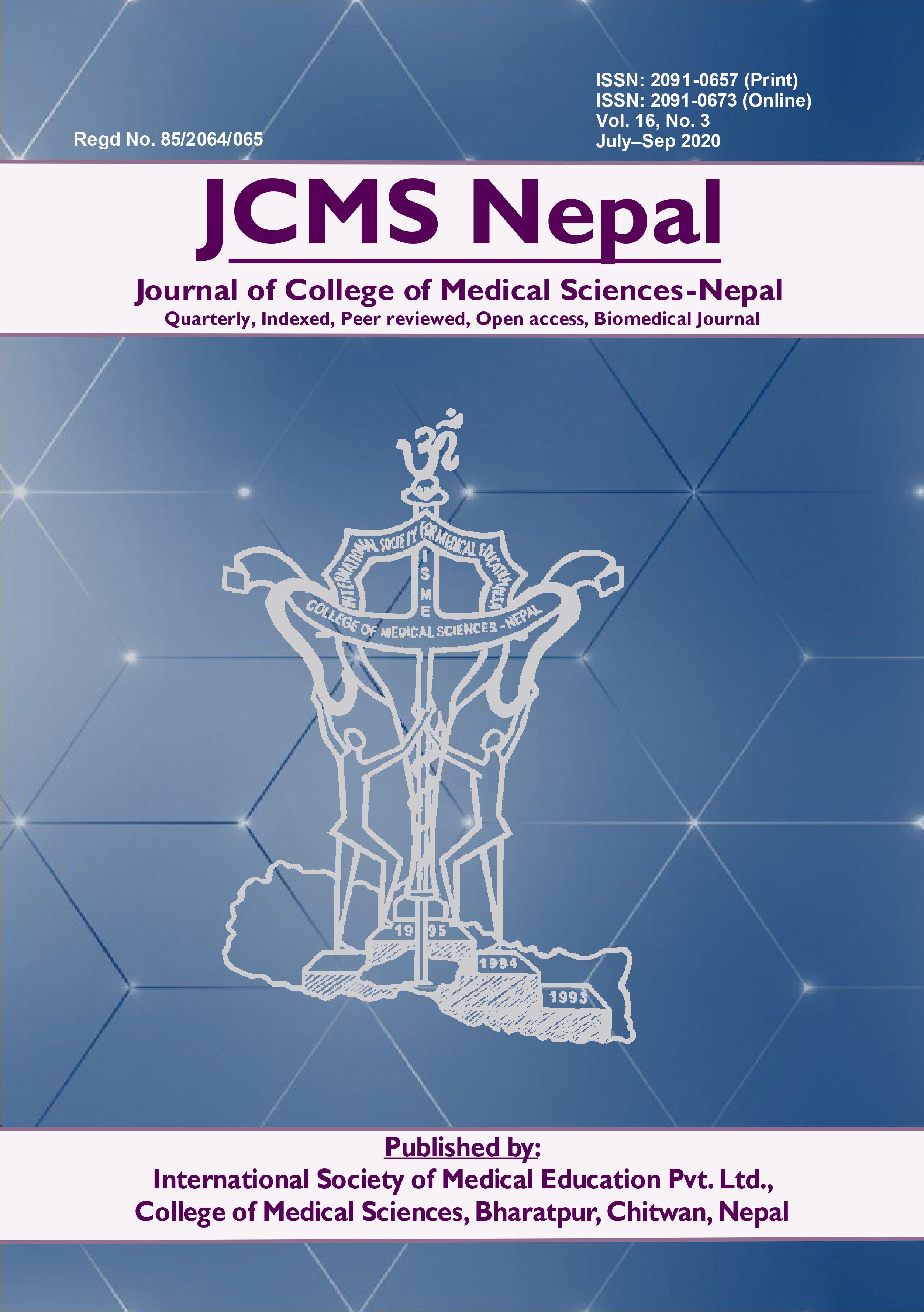Outcome of Immobilization in External Rotation Position after Closed Reduction in Traumatic Anterior Shoulder Dislocation
DOI:
https://doi.org/10.3126/jcmsn.v16i2.27435Keywords:
anterior shoulder dislocation; external rotation; ROWE score; brace complianceAbstract
Background: As documented in many studies, anterior shoulder dislocation can be effectively immobilized in both external and internal rotation positions, with favorable outcomes. However, controversy exists about the superiority of the technique of immobilization to achieve the reduced rate of redislocation. We conducted this study to assess the functional outcome of immobilization of shoulder in external rotation position after relocation in patients with acute anterior shoulder dislocation.
Methods: This is hospital based cross-sectional study in total of 36 patients of primary anterior dislocation of shoulder. They were managed with closed reduction and immobilization in external rotation position and followed up for up to twelve months. Functional outcome (including re-dislocation rate) during each follow-up visit was assessed by using ROWE Score.
Results: The mean age of the participants was 29.6±7.9 years (range: 17-44 years). Of them, 89.9% were male; and 55.6% were involved in risky jobs. Similarly, 50% of them sustained injury due to slip and fall, 72.2% presented to the hospital within 12 hours; and 69.4% had their right side involved. All the patients were compliant with treatment regime; 77.8% tolerated the brace well and the redislocation rate was 8.3%. ROWE score was found to be significantly increased between subsequent follow-up visits (p<0.05), except between six months and 12 months (p>0.05). Overall, ROWE score varied significantly across the total follow-up period (p<0.05).
Conclusions: Immobilization in external rotation position in traumatic anterior shoulder dislocation was a simple and easy method of conservative treatment with good patient compliance, less incidence of re-dislocation and good functional outcome.
Downloads
Downloads
Published
How to Cite
Issue
Section
License
This license enables reusers to copy and distribute the material in any medium or format in unadapted form only, for noncommercial purposes only, and only so long as attribution is given to the creator.




